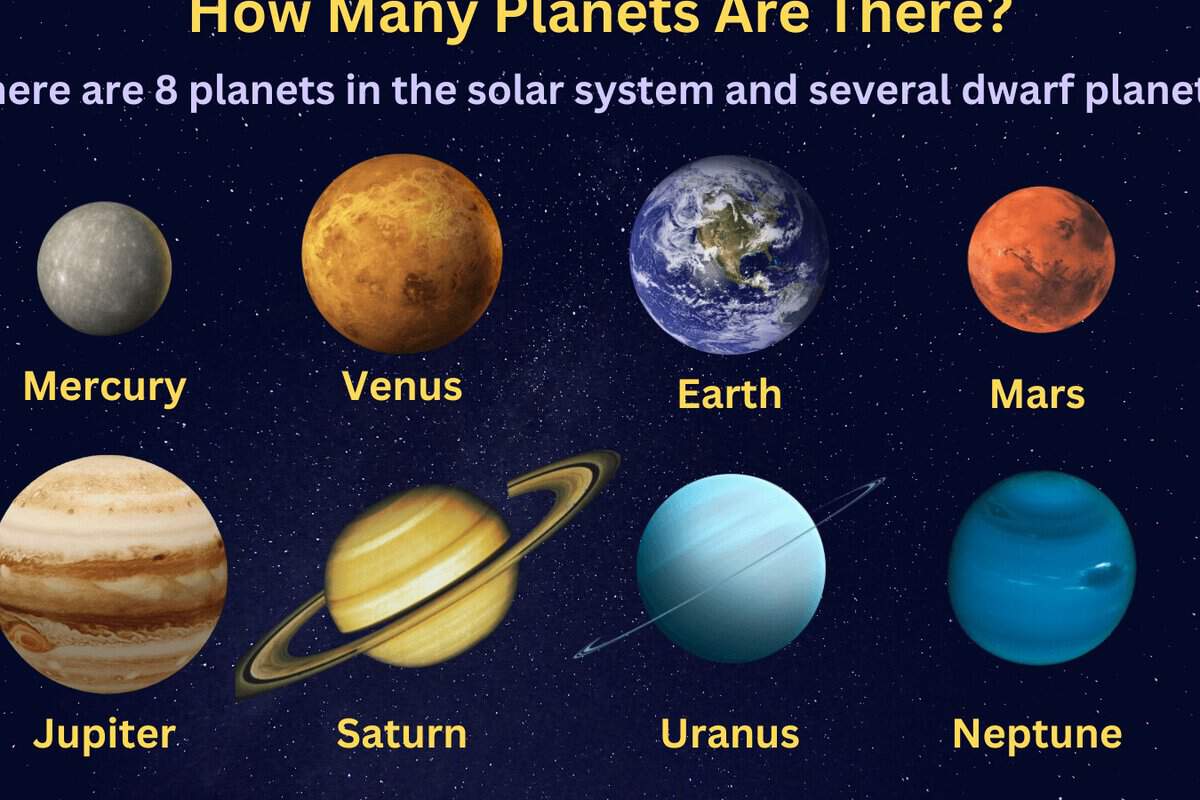Recently, I’ve been experiencing a recurring dream with increasing frequency. It feels as though I am already awake, opening the window and soaring into the boundless sky. I ascend into outer space, clad in a delicate nightgown, effortlessly catching meteorites with my bare hands and gliding past the celestial bodies. Upon waking, I am overcome with an overwhelming longing – oh, if only I could embark on a grand exploration of every nook and cranny within our solar system, and perhaps venture even further beyond.

Understanding Planetary and Solar Systems
A planetary system refers to a collection of various celestial objects that are mutually attracted to one another and move together through space and evolve over time.
Several examples of such systems include:
Interestingly, our Solar System represents a unique instance of a planetary system, with the Sun positioned at its core.
What are the regulations governing planetary systems?
Both the Solar System and all other planetary systems adhere to a set of universal principles:
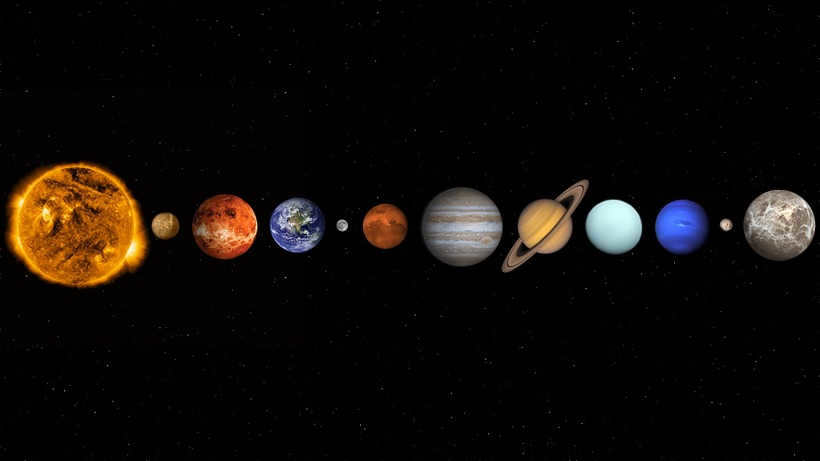
- The center star is the main feature of a given star system.
- The given star usually contains the largest amount of mass compared to other objects in the system.
- The orbits of the planets and their natural satellites are aligned in the same plane.
- Similar to our Earth, the planets rotate on their own axis and orbit around a central star.
Can life exist beyond our solar system?
Scientists have always dreamed of finding extraterrestrial life. Despite extensive exploration within our own solar system, we have yet to find any evidence of life. Mars has long been considered a potential habitat, but unfortunately, it has not lived up to expectations.
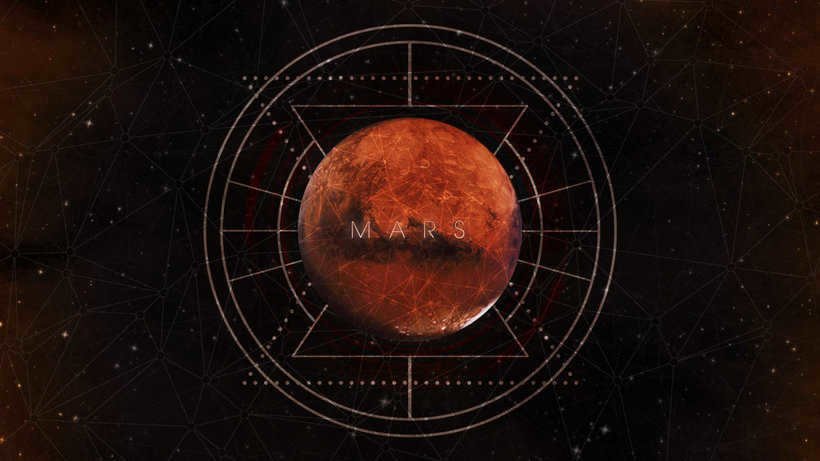
Currently, individuals are endeavoring to detect even the slightest trace of a bacterium on the moons of Jupiter. These moons are encased in ice, which has the potential to conceal an ocean beneath the surface. Given these circumstances, it is highly unlikely that humanoid intelligent entities exist. However, the discovery of a minuscule microorganism beyond Earth would instill optimism in the possibility that life exists beyond our Solar System.
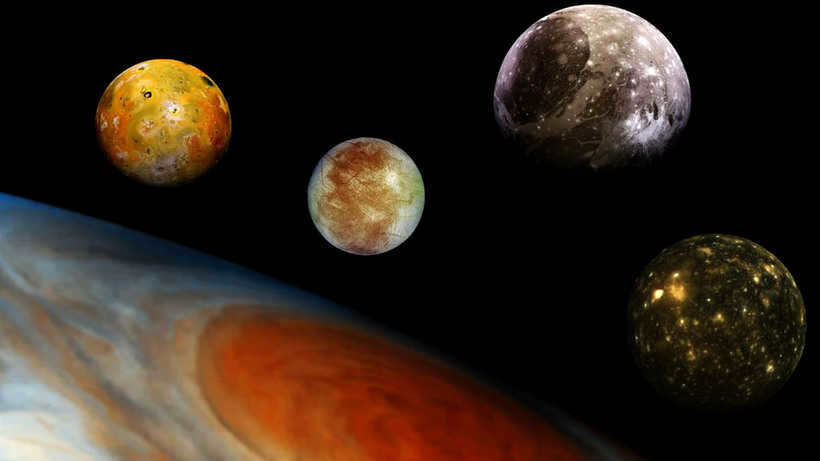
Ultimately, the prospect of exploring the vastness of the universe is hindered by the immense time it would take to do so. The task of surveying the entire cosmos would require millions of years, rendering it impractical for us to embark on such a journey. Instead, our search for extraterrestrial life is limited to more proximate regions, or perhaps we can rely on the possibility of a more technologically advanced civilization reaching out to us.
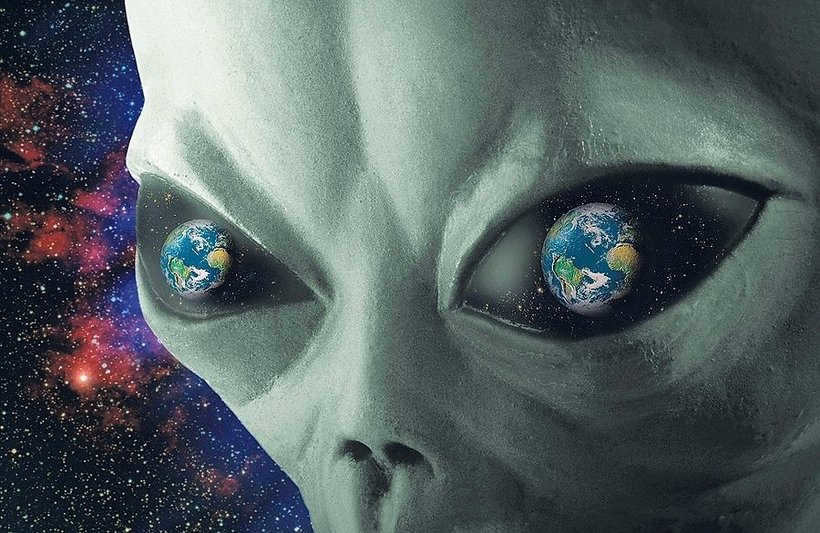
The enigmatic cosmos has always fascinated humanity like nothing else in the history of the Universe. Throughout the ages, people have been driven to unravel its secrets. It’s common knowledge that the Earth is a constituent of the Solar Planetary System, alongside a variable number of other planets. But why is the exact count so uncertain? Join me as we delve into this mystery.
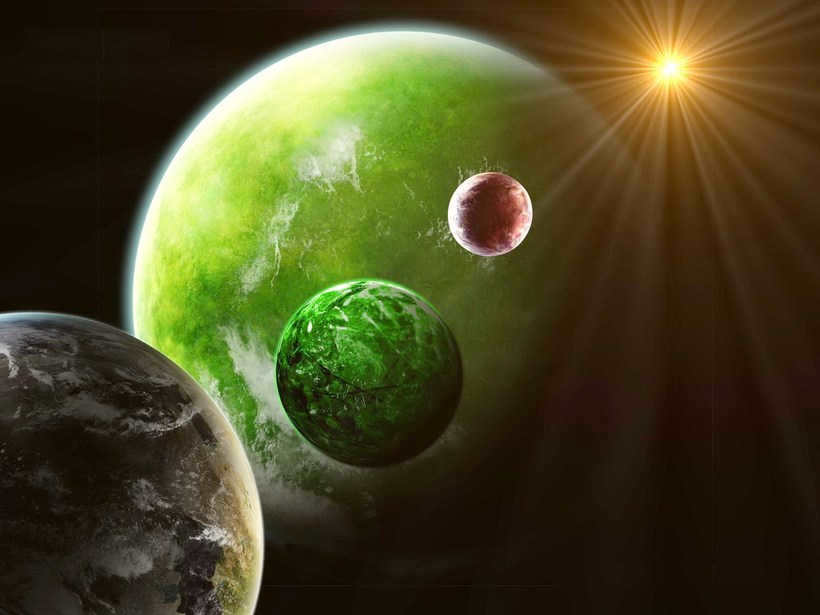
The enigmatic “Ninth Planet” or the number of planets in the Solar System.
For a while, it has been commonly accepted that there are nine planets in the solar system. There are 9 known planets, including Pluto. However, this perception has recently undergone a change. Scientists have conducted a more detailed analysis of the planets in the solar system and reached the conclusion that Pluto does not meet the criteria to be classified as a planet. Moreover, in 2016, researchers proposed a hypothesis that is 90% confirmed, asserting that there are indeed nine planets in the solar system, but the newly recognized ninth planet is not Pluto, but another celestial body.
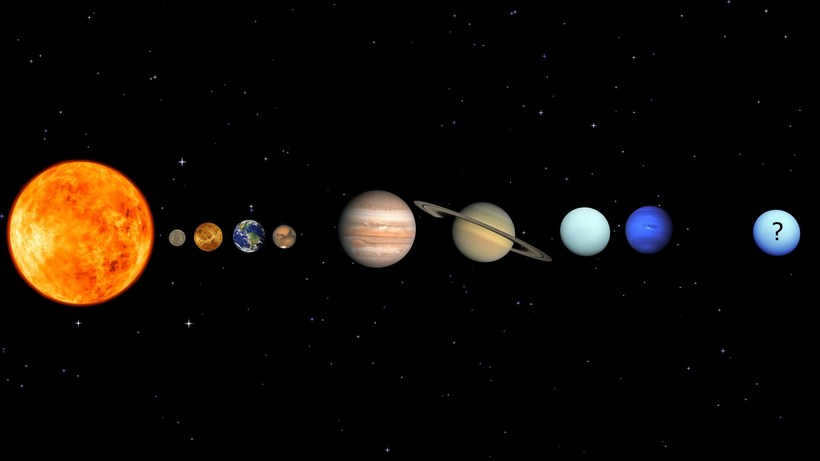
The scientists who made the discovery have named the planet Fat Lady. The reason behind this name is its incredible size, which is approximately ten times larger than that of the Earth! Additionally, this massive planet has a frigid climate and takes anywhere between 10,000 to 12,000 years to complete its orbit around the sun. Just imagine the enormity of that time scale!
More details about its neighboring planets
While ongoing research continues to unravel the mysteries of the so-called “ninth planet,” humanity already knows with certainty that there are seven neighboring planets to our own Earth. It is truly fascinating to delve deeper into their characteristics.
- Mercury. This planet experiences extreme temperatures, dropping to minus 170 degrees at night and rising to plus 400 degrees during the day.
- Venus. Known as the brightest planet in our solar system, Venus is enveloped in thick clouds that reflect sunlight. It is a volatile world, with constant volcanic eruptions and frequent lightning storms.
- Mars is also known as the Red Planet. Surprisingly, many of Earth’s microorganisms actually originated from Mars. Additionally, Mars had abundant water resources in the past.
- Jupiter is the largest planet in our solar system. It is characterized by intense winds, powerful lightning bolts, and a perpetual storm that has been raging at its equator for more than 300 years.
- Saturn is a planet with a distinctive ring system. These rings are made up of debris from one of its satellites.
- Uranus is an unusual planet that lies on its side. It has a total of 27 satellites.
- Neptune is the farthest planet from the sun. It has incredibly fast wind speeds, reaching over 1,500 kilometers per hour.
A celestial body known as the Sun
The Sun made its appearance approximately 5 billion years ago. It is a luminous star, consuming an astonishing 700 billion tons of hydrogen every second. Its outer layer reaches a scorching temperature of around 5,500 degrees. It’s truly mind-boggling, don’t you think? Scientists predict that the Sun has another 5 billion years left in its lifespan, giving us ample time to enjoy its radiance. However, after 1 billion years, living on Earth may become challenging due to the Sun’s expansion and increased heat. Nonetheless, let’s remain optimistic about the future.
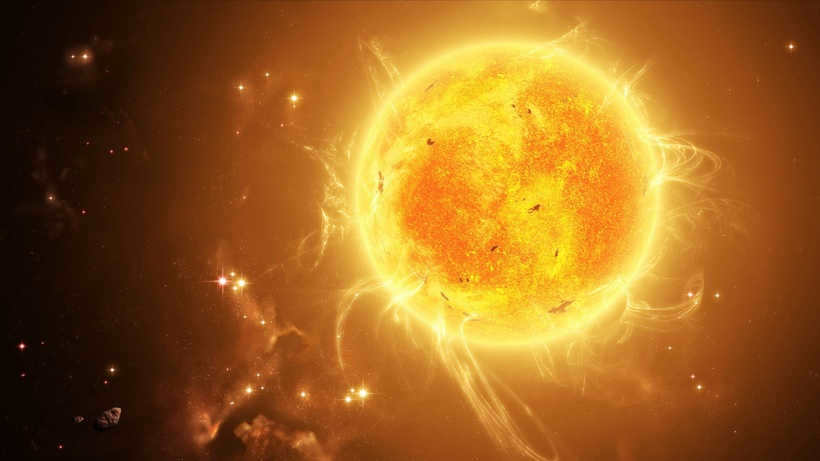
The sun, our life-giving little star, serves as our constant beacon in the vast darkness of space.
For countless generations, the curious among us have gazed up at the heavens. When we peer into the infinite distance, our earthly troubles seem minuscule in comparison to the cosmic wonders that surround us. As a child, my father and I would spend nights feeding the Big Dipper and tending to the hair of Veronica, the wife of King Ptolemy.
Today, I invite you to join me on an imaginary journey. No, we won’t be feeding the Big Dipper this time, but instead, we will explore the celestial sisters of our home planet.
An overview of the solar system
To start, let me provide you with a concise overview of a rather ordinary solar system. of our solar system.
Returning to the present, the solar system has assumed its familiar configuration. Let’s address the query: “What constitutes a solar system?”. A solar system is a planetary system centered around a yellow dwarf.
The primary constituents of the solar family
Our solar system accommodates a diverse array of inhabitants. Disregarding the local despot who exerts stringent gravitational dominance over the other occupants (the Sun accounts for 99.86 percent of the solar system’s mass), the main constituents of the family are planets. However, they don’t always see eye to eye either, as for inexplicable reasons, the planets have divided into two factions: one quartet revels in the Sun’s radiance, while the other maintains a respectable distance from the star.
The planets belonging to the Earth group (the ones that are close to the sun):
The massive planets:
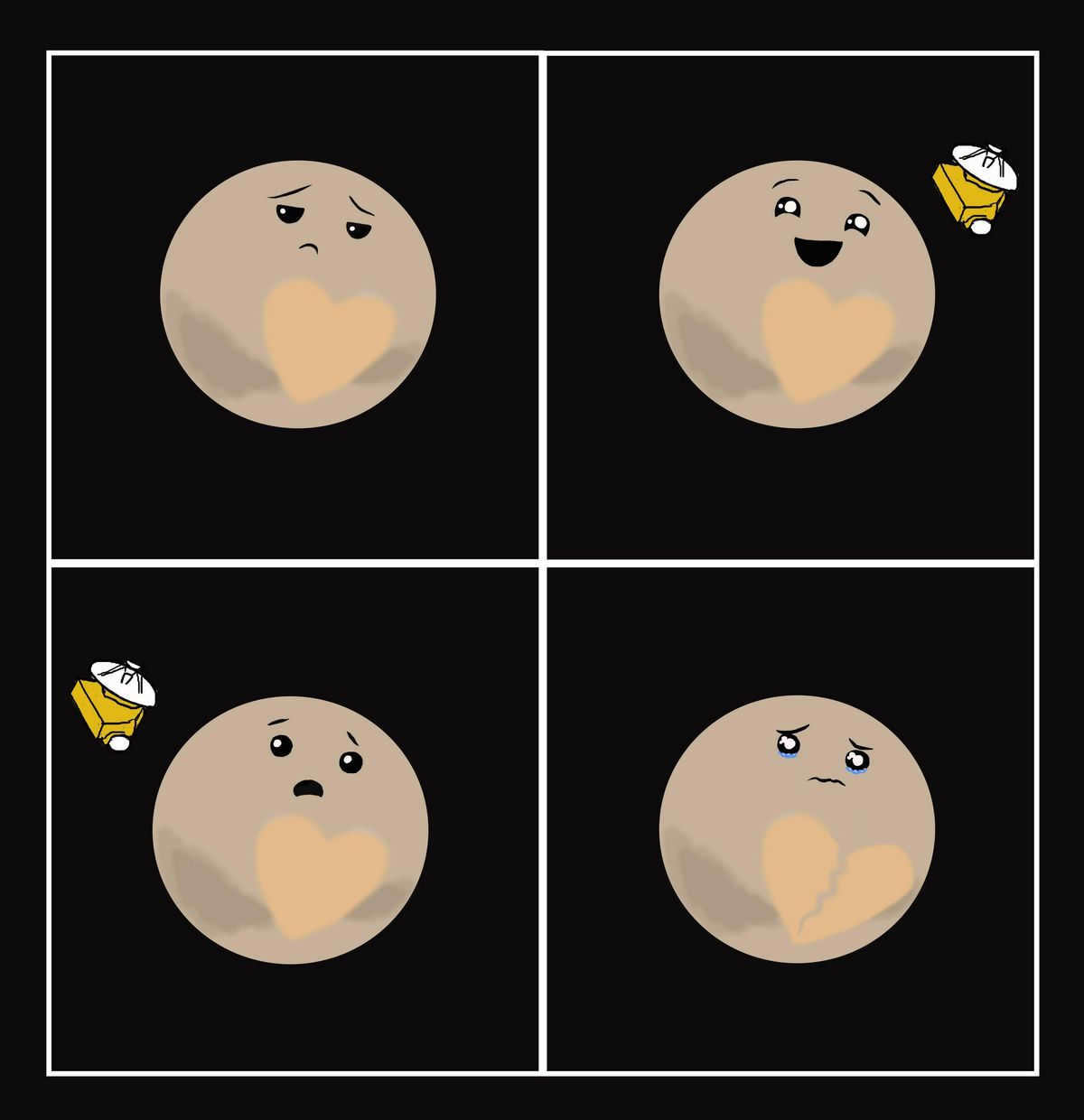
- Jupiter;
- Saturn;
- Uranus;
- Neptune.
The number of planets in the solar system is very interesting. There are four giant planets in the solar system, namely Jupiter, Saturn, Uranus, and Neptune. These planets are known for their large size and unique features. Each planet has its own characteristics and is a subject of scientific study. Scientists continue to explore and learn more about these fascinating celestial bodies.
Ah, yes, there’s still one distant Pluto in the vastness of space. Pluto, know that we stand in solidarity with you!
When I look up at the night sky, I am always captivated by the sheer beauty and vastness of the universe. On calm evenings, as I gaze at the clear expanse above, I find myself contemplating the unimaginable distances to the stars and galaxies beyond. Each star I see could be a sun, a planet, or a whole separate galaxy. And among this countless multitude, could our solar system truly be one-of-a-kind? Astronomers tirelessly search for systems and planets similar to ours, hoping to find answers. In the meantime, let me explain what the solar system is and where its boundaries lie.
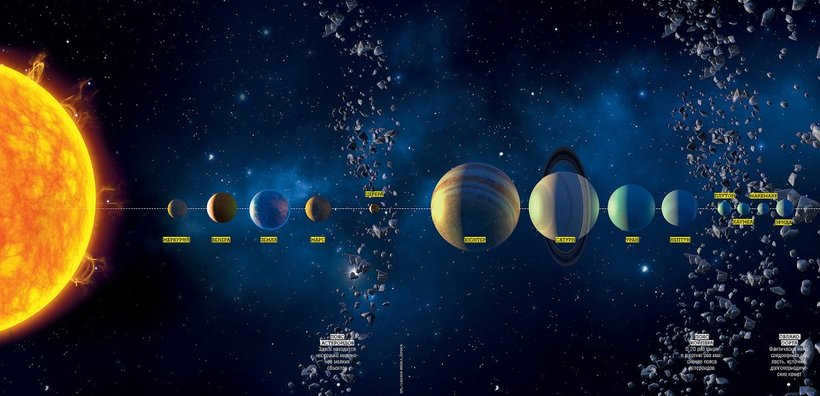
The Definition of the Solar System
The solar system is the region of outer space where the Sun, along with other stars and planets, as well as various other celestial objects like asteroids, comets, and meteorites, are located. This entire arrangement is referred to as a system, with all objects orbiting around the Sun due to its immense gravitational force. Below are some key points about the solar system.
- The Sun serves as the primary source of energy, and its strong gravitational pull maintains the planetary orbits. Additionally, the Sun’s energy influences the climate and potentially plays a role in the origins of life.
- The solar system consists of several planets, including Mercury, Venus, Earth, Mars, Jupiter, Saturn, Uranus, Neptune, and Pluto.
- The Sun accounts for 99.86% of the total mass of the system.
- The giants (Jupiter, Saturn, Uranus, Neptune.) make up 99% of the mass of the planets, and they are mostly composed of gas, helium, hydrogen, methane, and ammonia.
Where Does the Solar System End?
Scientists are still trying to determine the precise boundary of the solar system, as there are multiple definitions regarding this matter.
One common definition of the solar system’s edge is the area where solar particles collide with interstellar gas at a distance of 150 astronomical units. (An astronomical unit is the average distance between the sun and the earth, about 150 million kilometers.) This particular region is known as the heliopause.
Another boundary of the solar system is the point where the Sun’s gravitational influence becomes weaker than the gravitational pull of the galaxy. This region, called the Hill sphere, is located a thousand times farther away.
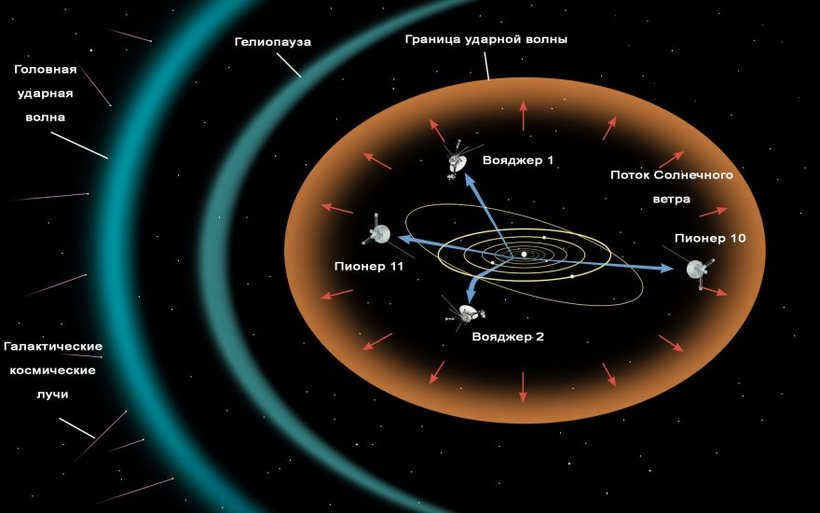
It is no secret that I am a huge fan of science fiction, whether it be movies, books, or anything else. In today’s world, there is an abundance of imagination and speculation about the vast expanse and mysteries of outer space, which remain largely unfathomable to us humans. However, one thing we can be certain of is that humanity is a life form that originates from planet Earth, situated in our solar system and revolving around the Sun. There are countless other life forms out there, but for now, let’s focus on our own as we embark on our journey through the visible realm of space.
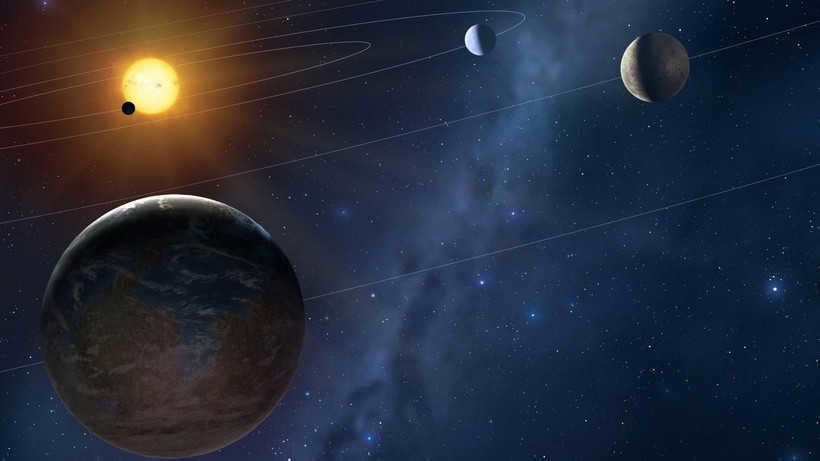
What is included in the solar system
The solar system is a relatively small group in comparison to the rest of the universe, but it contains some extremely large celestial objects. The most significant of these is the Sun, and it is indeed expected to grow significantly in size as it continues to evolve. Approximately 5 billion years ago, our system was a massive molecular cloud that collapsed to form the Sun, as well as a protoplanetary disk composed of various materials that later gave rise to the planets, asteroids, and other objects.
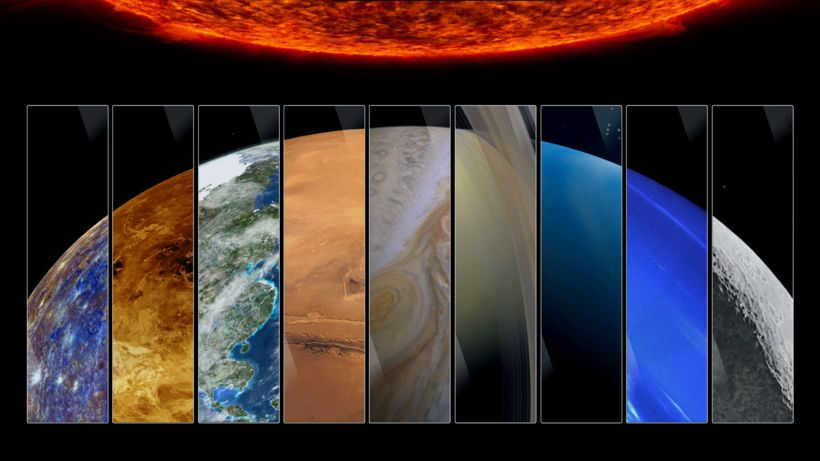
The 8 planets in our solar system can be divided into different categories. The first category, known as the Earth group, includes Earth, Venus, and Mercury. The second category, known as the gas giants, starts with Jupiter and is followed by Saturn, Uranus, and Neptune. There is a possibility of a ninth planet, which scientists estimate to be around 90% likely, but if it exists, it would be located at the outer edge of the solar system.
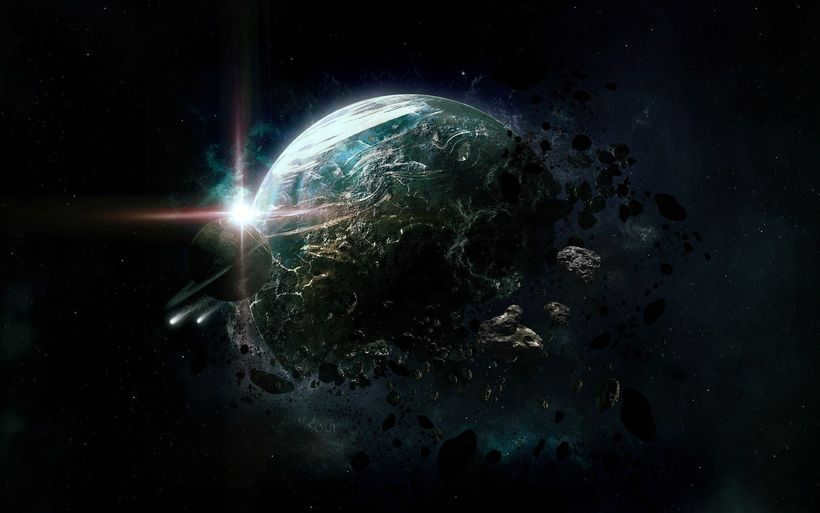
Exoplanets with Potential for Life
It is a widely held belief that there exists a multitude of life forms beyond Earth. Countless scientists are dedicated to the exploration of extraterrestrial civilizations. Among the discoveries made are several exoplanets that possess conditions similar to Earth:
All of these exoplanets are situated at a distance from their respective stars that makes the likelihood of life quite high. The universe is filled with exoplanets of various sizes and stars, making it an awe-inspiring spectacle.
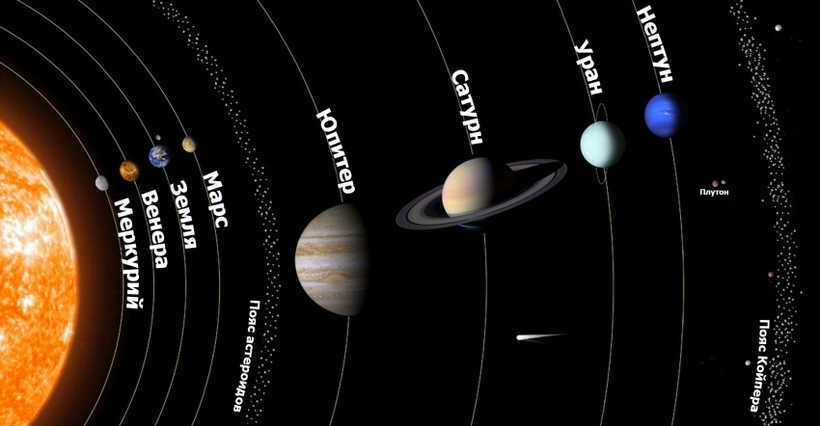
Definition of the Solar System
The Solar System, also known as the planetary system, is a system composed of a central body, which is the sun, and various objects that orbit around it. This system was formed approximately 4.58 billion years ago. The central star, which is the sun, accounts for a significant portion of the total mass of the bodies in our system, while the rest is distributed among the distant planets. Each planet has orbits that are relatively circular and are confined within a flat disk known as the ecliptic plane.
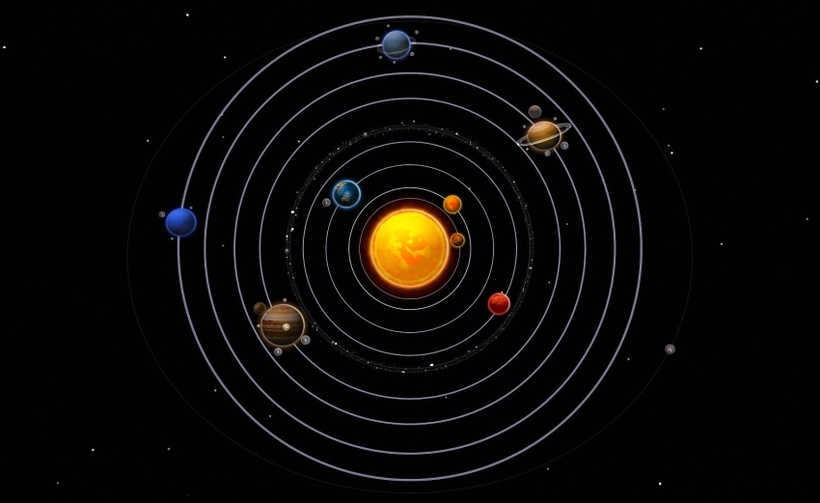
Structure of the Solar System
Our solar system consists of The Sun and eight major celestial bodies, known as planets.. Apart from our home planet Earth, there are seven other planets orbiting the solar sphere:
- Mercury – has a structure that resembles that of the moon.;
- Venus – is characterized by the most dense atmosphere and is sometimes referred to as “Earth’s sister” due to its similar composition and size;
- Mars – our closest “neighbor” which is 53% smaller than Earth;
- Jupiter — the largest celestial body in our solar system, has a gaseous structure.;
- Saturn is a massive gas giant known for its stunning rings composed of tiny particles of ice and dust;
- Uranus – one of its interesting characteristics is its unique rotation around the Sun “on its side” due to its highly inclined orbit;
- Neptune – is four times larger than Earth and was the first planet to be discovered using mathematical calculations;
The last two planets can only be observed through a telescope, while the others can be seen with the naked eye on a clear night.
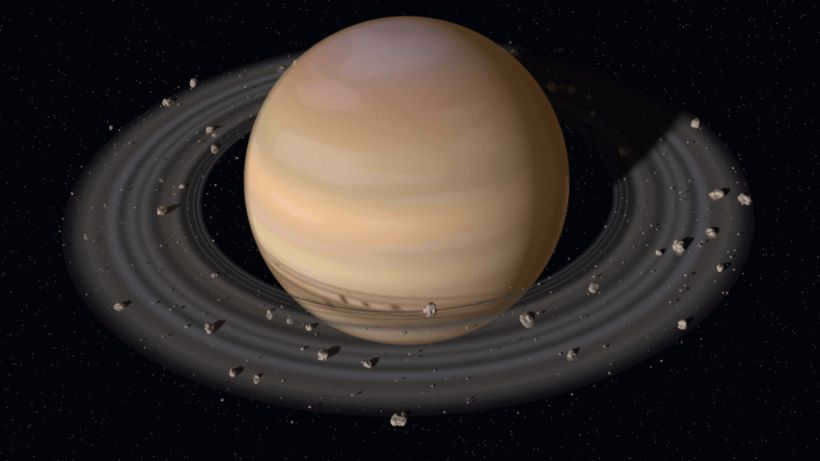
Our solar system consists of a collection of various celestial bodies, which can be divided into two main categories: the planets and other smaller objects.
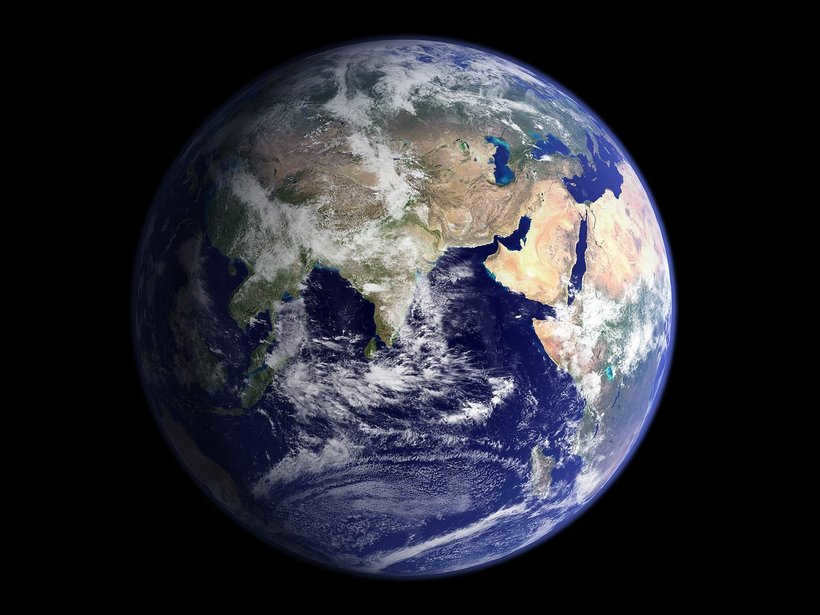
- Mars, Venus, Earth, and Mercury are considered the inner planets. They have a high density and a solid surface.
- Neptune, Uranus, Saturn, and Jupiter are known as the outer planets, or gas giants. In terms of size, they are much larger than our planet Earth.
An intriguing aspect of the system comets is their abundant presence in space, occupying diverse orbits. These orbits can range from being comfortably distanced from Earth to causing apprehension among scientists worldwide. For instance, one hypothesis regarding the extinction of dinosaurs suggests that it resulted from a comet colliding with our planet.

During my camping adventures, I often found myself having to spend the night outdoors under the open sky. I would gaze up at the vast expanse of stars, each one twinkling like a tiny diamond. These memories have inspired me to share a little bit about our solar system.
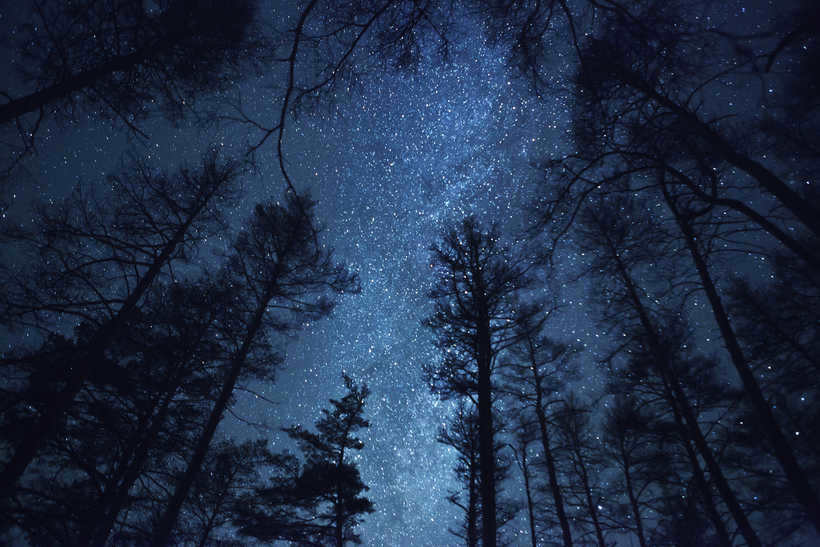
Exploring the Extent of the Solar System
At present, the inquiry remains unresolved, but the primary variables that establish these limitations include solar attraction and solar gusts. The external perimeter of the solar gust is referred to as the heliopause, beyond which the gust and interstellar matter blend and merge with one another. This boundary is situated at a distance 400 times more distant than Pluto. It is hypothesized that the boundary is 1,000 times 1,000 times more distant due to the predominance of the Sun’s gravitational field over the galactic gravitational field.
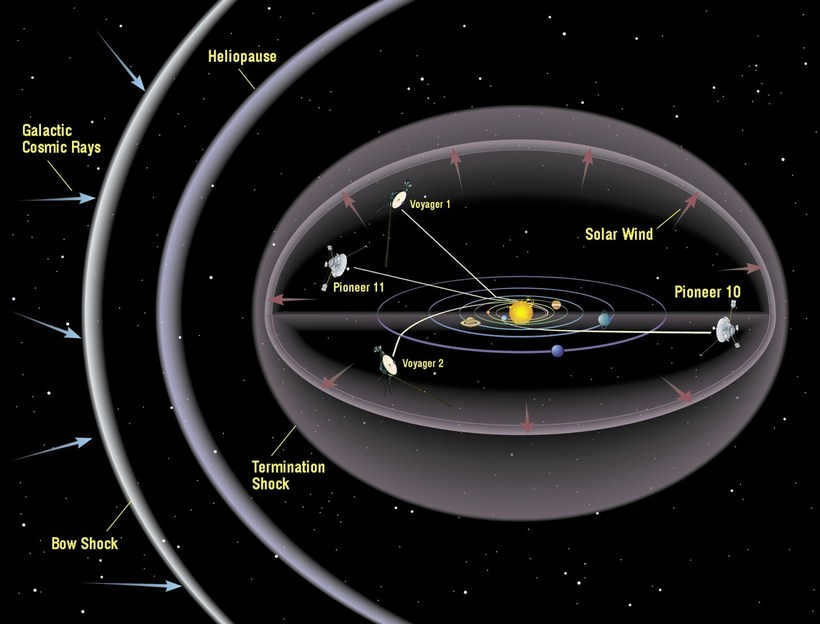
The 9th planet.
In the year 2016, a remarkable event occurred – K. K. Batygin and M. Brown made an astounding discovery of a novel celestial body in our solar system, which has a high likelihood of existing, estimated to be around 90%. This intriguing entity has been aptly named “Planet 9.” Positioned at an astounding distance of approximately 90 billion kilometers from the sun, this planet is a colossal entity, measuring approximately 10 times the size of our beloved Earth. Its orbital path around the sun spans a staggering time frame of 10,000 to 20,000 years. Currently, scientists are actively engaged in exploring and studying the fascinating existence of this celestial body.
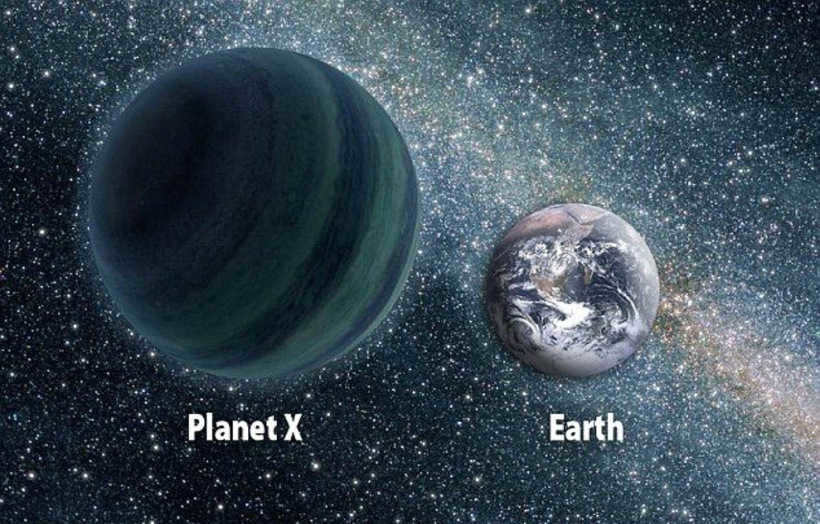
The Solar System of Sweden
The Solar System of Sweden is a unique installation in Stockholm, Sweden. It is known as the largest model of the solar system on Earth, with a scale of 1:20 million. This installation is constantly evolving, with new additions being made regularly. At the center of the installation is a giant spherical structure known as the Ericsson-Globe, which represents the sun. The group of planets representing the Earth is located in Stockholm, while the other planets are spread out along the Baltic Sea. In addition to the planets, this model also includes other celestial bodies.
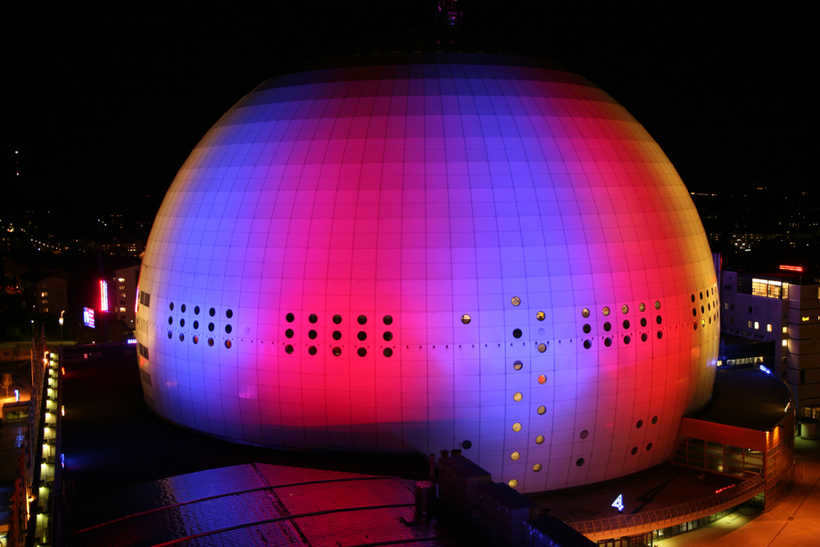
- small planets;
- moons;
- celestial objects with a tail;
- objects located farther than Neptune;
- rocky objects;
- the region of space influenced by the Sun.
What is the estimated timeline for the end of the solar system?
According to the theory, a system composed of 3 or more bodies is capable of motion and the ejection of one of them out of it. Furthermore, due to gravity, the bodies can experience “ACCIDENTS” if they pass in close proximity to each other, resulting in the system shrinking to one huge object. As of now, this problem has not been solved, but by analyzing it, it has been calculated that the system is most likely stable when it comes to the ejection of planets. However, there is no stability when it comes to planets colliding with each other. I want to reassure you that this may not happen until at least the next 4.57 billion years. 4.57 billion years. 🙂
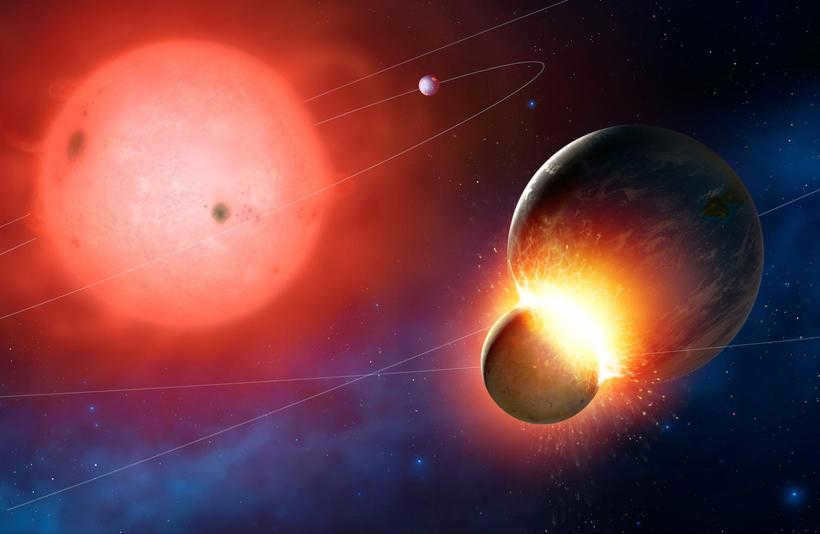
During my childhood, I was completely engrossed in watching television, particularly when the Discovery Channel was available through our cable at home. Although I struggle to recall the specific names of those programs, I distinctly remember that one of them was hosted by the renowned theoretical physicist, Stephen Hawking, while the other was presented by Morgan Freeman. Both shows delved into the intricacies of the universe, exploring topics such as the workings of the universe and the origins of stars, among numerous other fascinating facts.
What does the term “planetary system” mean?
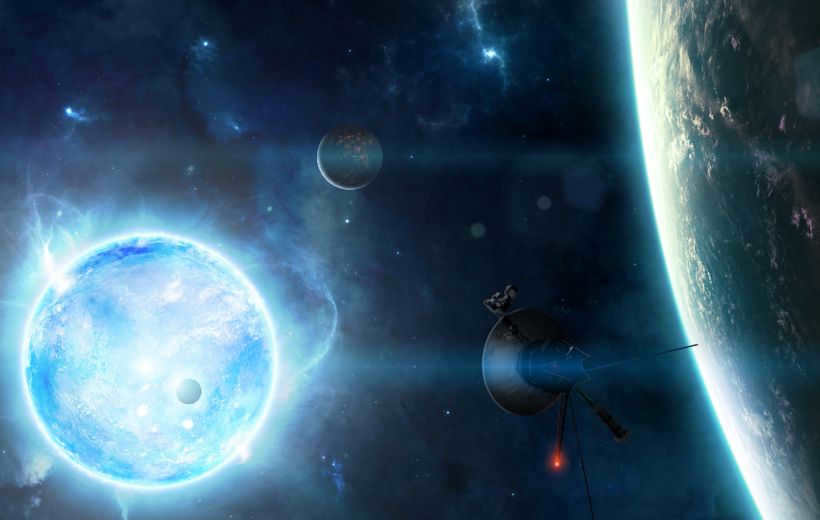
A planetary system (which includes the solar system) refers to a collection of celestial bodies that are influenced by the gravitational pull of the central and most massive object, which is a star (similar to our own Sun). In our system, there are eight planets in total.
Let me now explain the origins of this fascinating system!
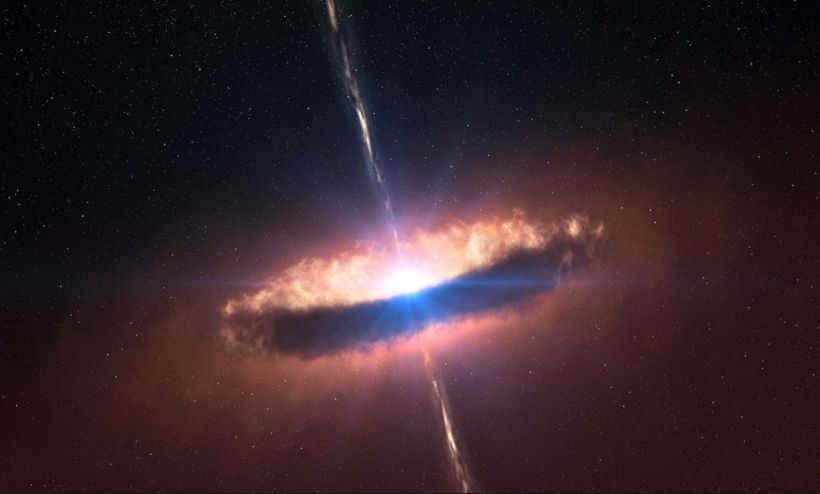
- Approximately 7 billion years ago, a cloud of dust and gases came together.
- Our cloud collided with another cloud, causing the dust to form larger bodies that began to attract others. This stage was the impetus for the development of the Sun and started the constant rotation of the future planets.
- The Sun attracted more and more other bodies, increasing its temperature and mass. It was getting ready to ignite.
- As the star heated up, the planets took their places in front of it, arranged by their mass, like kids in gym class lined up by height. That’s why our planet is third in line.
- 4 billion years ago, the Sun reached the temperature necessaryto initiate a nuclear reaction and commence the fusion of helium from hydrogen.
The Sun will continue to shine as a star for approximately 4.5 billion years.. This is the destiny of massive stars, and the Sun falls into the category of a medium-sized star. The Sun is classified as a medium-sized star..
The destiny of the Sun.
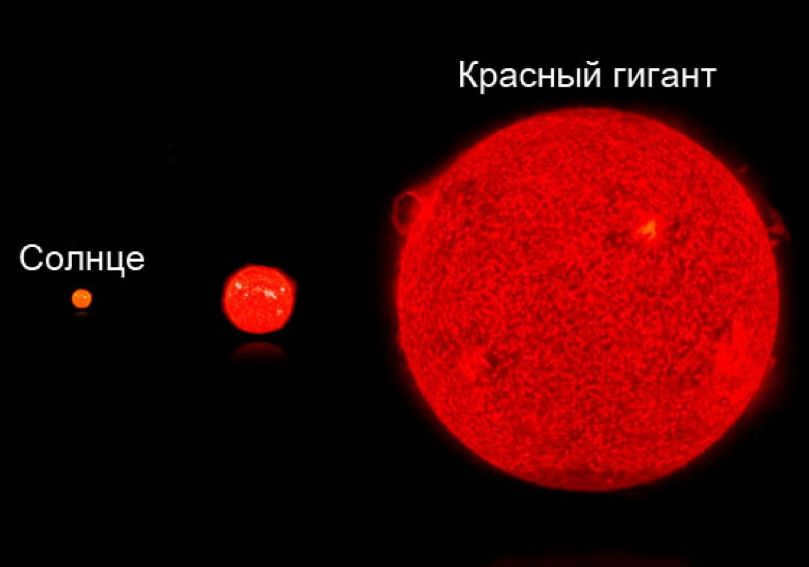
In approximately 5 billion years, we will exhaust our fuel supply, but the Sun will not extinguish. The star’s core still contains hydrogen. As the nuclear reaction reaches the core’s fuel, the star will expand and reach the size of Earth’s orbit, transforming into a red giant.
The red giant will continue to burn for billions of years until it undergoes a cooling process and becomes a white dwarf.
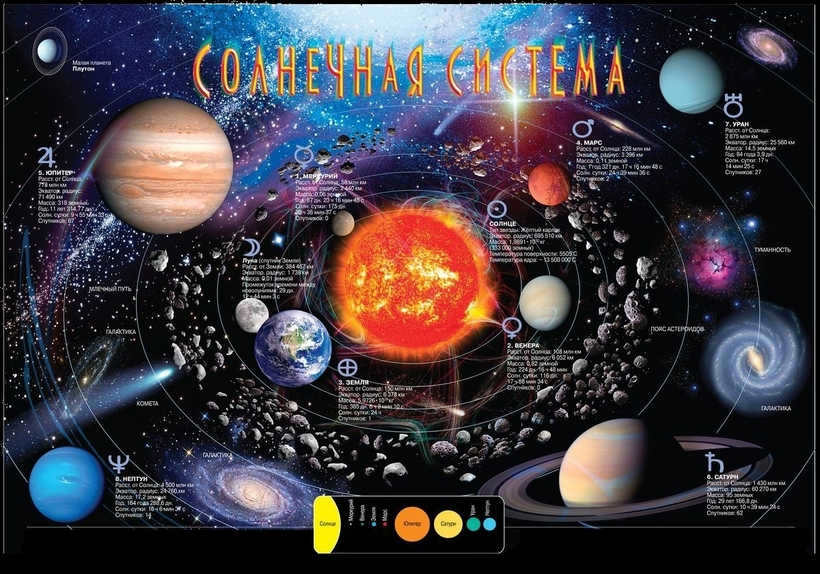
What is the solar system
Figuratively speaking, the solar system is our “universal abode” or, more precisely, our “little house” or “hideaway”. There are countless billions and trillions of such corners in the universe (although this has only been proven in theory so far). However, today I will specifically discuss the “campuses” of our cosmic corner, its residents, and all the fascinating places within.
Therefore, the Solar System (in addition to the Sun itself and the omnipresent interplanetary medium) consists of four conventional groups of celestial bodies:
- The group of planets in our solar system consists of annealed Mercury, cloudy Venus, our Earth, and the mysterious red planet Mars.
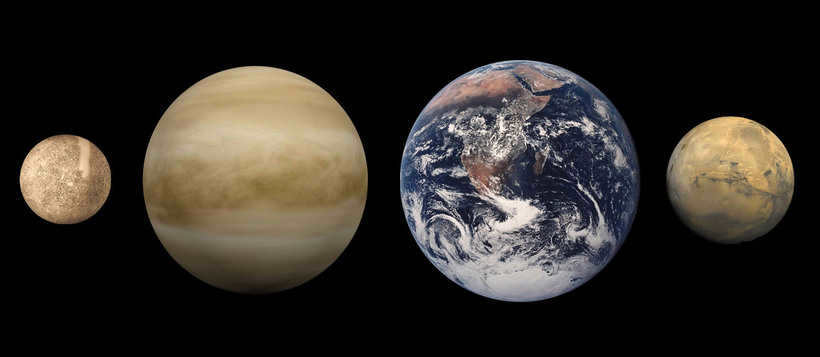
- The asteroid belt is home to the eternal leader Ceres.
- The giant planets in our solar system are gas giants without a solid shell, including Jupiter, Saturn, Uranus, Neptune, and a hypothetical ninth planet.
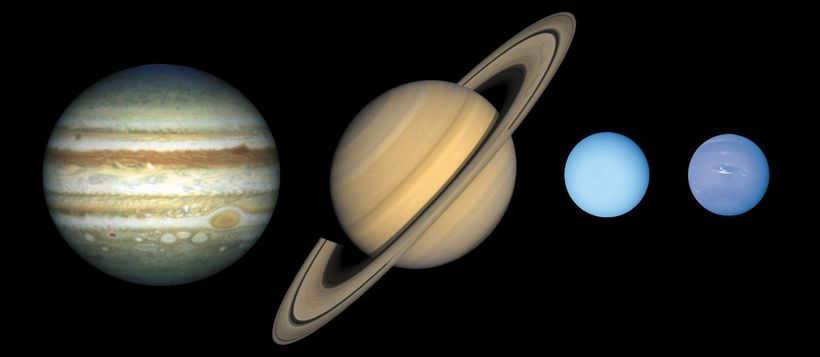
- Objects beyond Neptune – comets, centaurs, the Kuiper Belt. The unfortunate ex-planet Pluto and its companions, Makemake and Haumea.
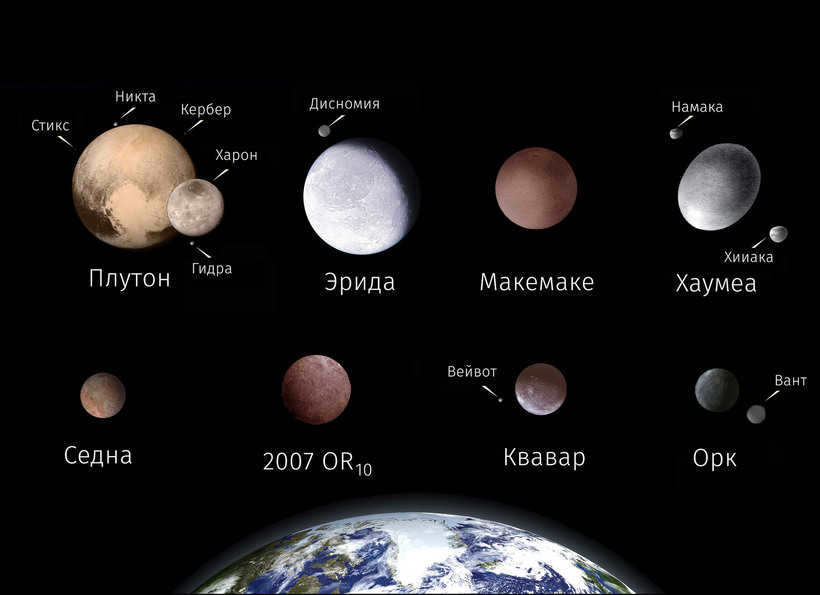
Furthermore, numerous scientists firmly believe that the limits of the solar system stretch significantly beyond and encompass regions like the “scattered disk” (which serves as the primary hub for the majority of comets in the solar system) featuring its own “colossus,” the dwarf planet Erida. Nevertheless, debates regarding the classification of Erida, as well as Pluto, persist up to the present.
A truly remarkable occurrence. What exactly is the solar system? Let’s consider, for instance, a collection of colossal entities – each and every one of them possess a distinctive feature! And guess what? There are rings around them! Humans don’t have that. Still not convinced? Here’s another fascinating fact: 69 (. ) That’s how many satellites Jupiter has (and the number of newly discovered ones continues to increase!) and they are so diverse in composition and “personality” that one might question if they are all related to the same planet. Triton, Neptune’s companion, is moving in the opposite direction compared to its counterparts, and Uranus itself Uranus itself is tilted “lying on its side“.
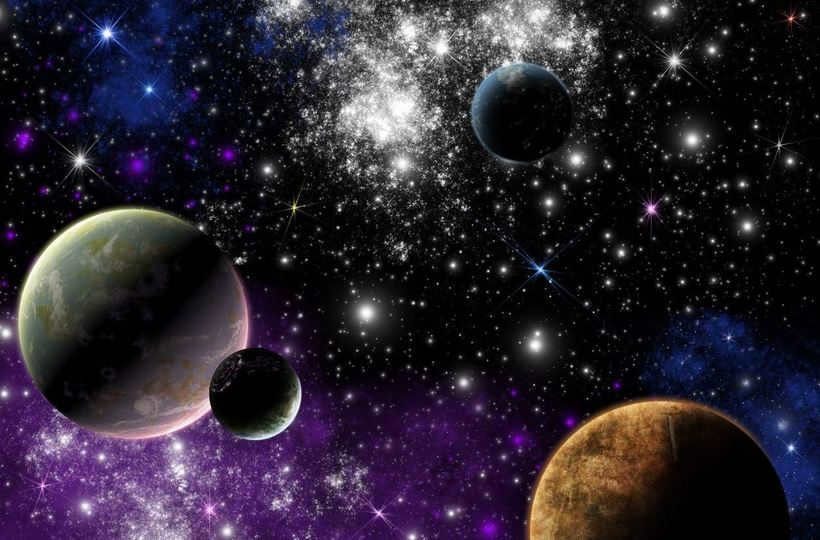
The vastness of space holds endless wonders and possibilities, captivating us with its beauty and mystery.
Within this concise article, we explore the fascinating topic of the solar system from a child’s perspective. Using simple and accessible language, we delve into the solar system, its various planets, and numerous other intriguing aspects.
In the vast expanse of the universe, a multitude of celestial bodies can be found, ranging from planets and satellites to stars and solar systems. Within our own solar system, which houses our precious planet Earth, an array of captivating objects can be discovered, such as planets, satellites, asteroids, comets, and more. According to scientific theories, our solar system originated from a colossal assemblage of gas and dust. With a total of 8 planets, our solar system can be divided into two distinct groups: the inner planets, also known as the terrestrial planets, which consist of Mercury, Venus, Earth (the third planet from the Sun), and Mars; and the outer planets, commonly referred to as gas giants, which encompass Jupiter, Saturn, Uranus, and Neptune.
Between these two sets is the asteroid belt. And beyond the gas giants are the trans-Neptunian objects. The biggest of them is Pluto. Pluto was once classified as a regular planet, but it is now classified as a dwarf planet and also the largest object in the Kuiper Belt.
The Kuiper Belt is comparable to the asteroid belt, but it varies in that it is 20 times broader than the latter, as well as in its composition.
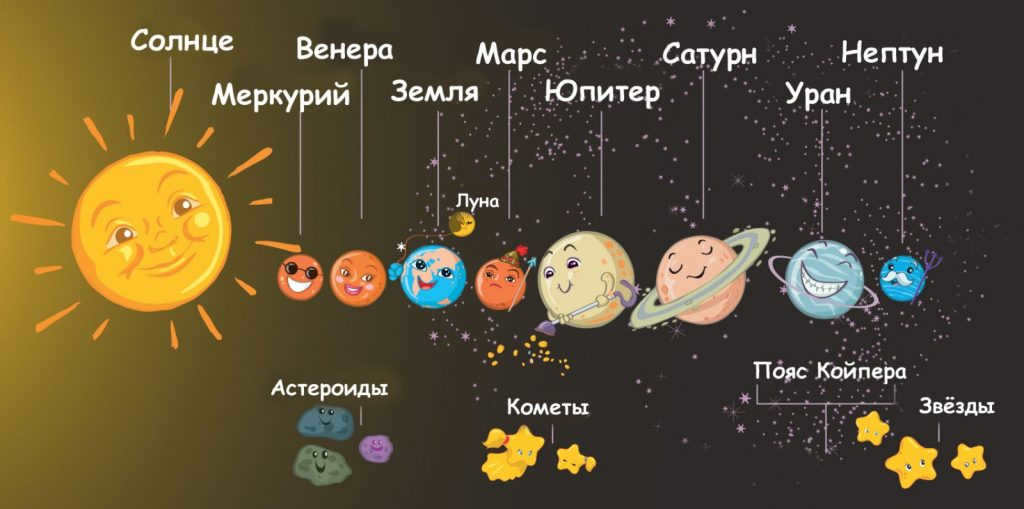
How to remember the planets and their order?
Using short mnemonic phrases or mnemonics can help in memorizing various information by creating artificial associations.
Here, we have gathered mnemonic techniques for children to memorize the planets of the solar system, which can aid in this sometimes challenging task. However, it is important to note that when these techniques were created, Pluto was still considered a planet, so it is included in most of them. Since 2006, Pluto has been classified as a dwarf planet, so it can now be omitted when memorizing the planets.
How to Memorize the Planets in the Solar System
If you want to remember the order of the planets in the Solar System (Mercury, Venus, Earth, Mars, Jupiter, Saturn, Uranus, Neptune, Pluto), you can use the first letters of each planet to create memorable phrases:
- We Keep Your Mind on the Planets in the Morning!
- A little bear tasted heavenly apples with a refreshing, juicy sip of nectar.
- On a freezing night, a young man climbed the mast to catch a glimpse of an unfamiliar harbor.
- My mom always told me, a young explorer, not to forget the names of the planets.
- The Sea Wolf tormented the Young Jedi, completely exhausting the poor boy.
- We’ll rendezvous tomorrow, my Young Friend, at the New Frontier.
- The Wise Sorceress, the Fashionista with the Golden Hair from the South, has a strong liking for the most recent Poetry.
- We are all aware that numerous young Groundhogs acquire knowledge about the names of celestial bodies.
- It is feasible to venture Beyond Mars with a skillful maneuver Off Our Planet.
- Mom is preparing strawberry treats, and her Young Son has ceased crying.
- Venya determined the size of the Earth using Marusina’s skirt, which was made of Satin and Uranium – he is quite mischievous.
- An ominous Sexually Transmitted Infection can be fatal for an exhausted Nymphomaniac.
- The last thing Mary from the Southern Hemisphere notices is the smile on the shore.
- Little Peter is slowly rotating the Earth; the Garden is adorned with Indestructible Lampshades (mnemonics of planets by Alexei Golovnin).
- When dreaming of Tying the Knot, simply taking off your skirt is not sufficient – you must also smile and kiss.
Remembering the order of the planets including the asteroid belt
Masha used a broom to clean the Earth, while Yura sat in Spider’s Nora.
In other words, the phrase was modified by adding the letter “A” – the Asteroid Belt.
Memorizing the planets starting from the farthest (Pluto) to the closest (Mercury) to the Sun.
It’s not difficult for even the youngest child to remember the planets, especially Venus and Mercury.
Poems for memorizing the celestial bodies
Amidst the wolves, the little hare dashed,
he stumbled, he stumbled, he tumbled –
♪ he didn’t rise again ♪
All the celestial bodies in a precise sequence,
Let’s name each one of them.
First, we have Mercury,
Next comes Venus,
Then Earth, the third in line,
Followed by Mars, number four.
Jupiter is the fifth,
Saturn, the sixth,
Uranus, the seventh,
And then comes Neptune,
The eighth in the row,
And finally, there’s Pluto, the ninth planet.
There was an astronomer on the moon,
He meticulously observed the celestial bodies:
MERCURY, as the first,
VENERA, as the second,
EARTH, as the third,
MARS, as the fourth,
JUPITER, as the fifth,
SATURN, as the sixth,
URANUS, as the seventh,
NEPTUNE, as the eighth,
And the farthest one, PLUTO,
If you can’t spot it, step outside!
Mercury is the first planet, Venus is the second,
Earth is the third, Mars is the fourth,
Jupiter is the fifth, Saturn is the sixth,
Uranus is the seventh, Neptune is the eighth.
A Poem to Help Remember the Order of the Planets
Remembering the planets can be a breeze
♪ Just use this verse and it will be a tease ♪
No more confusion, you’ll know them all with ease
Alternative Methods for Memorizing the Order of the Planets in the Solar System for Kids and Adults
There are other ways to easily remember the sequence of the planets in our solar system. One method is to create a sentence using words that are similar to the names of the planets.
For instance: Mercury (Mercury) is like my friend, Venus (Venus), who lives on Earth (Earth). One day, she ate Mars (Mars), which was left on the lectern (Jupiter), and threw the wrapper into a full urn (Saturn), shouting “Hurrah!” (Uranus) afterwards. Interestingly, she didn’t graduate from a vocational school (Neptune), but from an institute, where she ran away with a mischievous rascal (Pluto).
Among the pair of deities whose names start with the letter M, namely Mercury and Mars, there exist two female celestial beings: Venus and Earth. Positioned behind the god Mars is his paternal figure, Jupiter. Following the mighty god Jupiter in the celestial hierarchy is the planet Saturn, which possesses the distinctive feature of having rings. The term Saturn encompasses not only Saturn (SAT) itself but also the subsequent planets Uranus (UR) and Neptune (N). It is worth noting that Pluto, which comes after these planets, is not classified as a planet anymore but rather resembles the character Pluto the dog, who appears perplexed in the presence of the Greek gods within the pantheon.
Acronyms to help remember the planets
One way to easily remember the order of the planets is by using acronyms. Acronyms are created by taking the first letter of each word in a phrase to form a new word. This word can then be pronounced as a whole and serves as an abbreviation. To remember the planets, you can use the acronym: MeWeZeMa YUSUNP.
Are there any other creative or unique methods you know of to memorize the planets in our solar system? Share them in the comments!
The order of the planets in the galaxy and their respective properties.
What is the number of planets orbiting the sun?
The galaxy consists of eight planets and over 63 of their satellites, which are continually being discovered. Additionally, there are around 10 comets and a multitude of asteroids. All of these celestial bodies follow specific paths as they revolve around the Sun, which is significantly more massive than all the other bodies in the solar system combined.
The Sun, a star at the center of the galaxy, serves as the focal point around which the planets revolve. Rather than emitting heat or light, the planets simply reflect the Sun’s light. Currently, there are officially recognized 8 planets in the solar system. Let’s briefly list them in order of their distance from the Sun. Additionally, there are a few relevant definitions to consider.
Planetary Satellites: The galaxy also encompasses the Moon and the natural satellites of other planets, excluding Mercury and Venus. Notably, there are over 60 satellites in total. Many of the satellites of the outer planets were discovered through photographs taken by automated galactic vehicles. The smallest cross-sectional satellite of Jupiter, known as Leda, measures only 10 km.
Visual Representations of the Sun
The Sun, a vital star for sustaining life on Earth, provides us with energy and warmth. Classified as a yellow dwarf according to star categorization, it has existed for approximately 5 billion years. With a diameter of 1,392,000 km at the equator, it is 109 times larger than our planet. The Sun completes one rotation at the equator in 25.4 days, while it takes 34 days at the poles. Its mass is approximately 2×10^27 tons, which is about 332,950 times the mass of Earth. The core temperature of the Sun reaches a scorching 15 million degrees Celsius, while the surface temperature is around 5500 degrees Celsius. The Sun is primarily composed of 75% hydrogen and 25% helium. Now let’s delve into the number of planets in our solar system and explore their unique characteristics.
Galaxy planets arranged in pictures, starting from the sun
Mercury – the first planet in the galaxy’s order
Pictures of the planet Mercury
Mercury. The four inner planets (Mercury, Venus, Earth, and Mars) are the closest to the Sun and have solid surfaces. They are smaller compared to the four giant planets. Mercury has a faster orbital speed than the other planets, causing it to experience scorching heat from the sun during the day and freezing temperatures at night.
Revolution period around the Sun: 87.97 days.
Equatorial cross-section: 4878 km.
Rotation period (around its axis): 58 days.
Surface temperatures: 350 degrees during the day and -170 degrees during the night.
Atmosphere: very thin, composed of helium.
Main satellites of the planet: 0.
Venus – the second planet in the solar system
Explore the stunning visuals of planet Venus
Venus shares many similarities with Earth, including its size and brightness. However, its observation is challenging due to the thick layer of clouds that surround it. The surface of Venus is akin to a scorching hot stony desert.
It takes Venus approximately 224.7 days to complete one revolution around the Sun.
With a cross-section measuring 12,104 km at the equator, Venus boasts a substantial size.
Remarkably, Venus has a rotation period of 243 days, completing one revolution around its axis in this timeframe.
The average surface temperature on Venus is a blistering 480 degrees Celsius.
Venus has a compacted atmosphere primarily consisting of carbon dioxide.
Notably, Venus does not have any known satellites.
Earth – The Third Planet in the Solar System
Explore Earth through captivating pictures
It is believed that the Earth, like other planets, was formed from a cloud of gas and dust. Over time, particles of gas and dust collided, gradually forming our planet. During its formation, the surface of the Earth reached an incredibly high temperature of 5,000 degrees Celsius. As time went on, the Earth began to cool down, eventually developing a solid and rocky crust. However, deep within its core, the temperature still remains quite hot, reaching around 4,500 degrees Celsius. The molten rocks within the Earth’s interior occasionally erupt through volcanoes, making their way to the surface. Unlike other planets, Earth has a significant amount of water, which is essential for the existence of life. Its optimal position relative to the Sun provides just the right amount of heat and light, allowing life to thrive without being scorched.
One complete orbit around the Sun takes approximately 365.3 days.
The equatorial circumference of Earth measures 12,756 kilometers.
Surface temperature: 22 degrees (average).
Composition of the atmosphere: primarily composed of nitrogen and oxygen.
Mars’ primary natural satellite: the Moon.
Mars is the fourth planet in the galaxy’s sequence
Images showcasing the planet Mars
Despite its similarities to Earth, no signs of life have been found on Mars through exploration by galactic probes. It is the fourth planet in the sequence.
Revolution period around the Sun: 687 days.
Equatorial cross-section diameter: 6794 kilometers.
Rotation period: 24 hours and 37 minutes.
Surface temperature: -23 degrees (average).
Composition of the planet’s atmosphere: rarefied and primarily composed of carbon dioxide.
Main satellites in order: Phobos, Deimos.
Jupiter – the fifth planet in the Galaxy
A photo of the planet Jupiter
Jupiter, along with Saturn, Uranus, and Neptune, is composed primarily of hydrogen and other gases. Jupiter’s size surpasses that of Earth by over 10 times in cross-section, 300 times in mass, and 1300 times in volume. It is more than twice as massive as all the other planets in the Galaxy combined. What would it take for Jupiter to become a star? It would need to have 75 times its current mass!
Jupiter’s orbital period around the sun is approximately 11 years and 314 days.
The equatorial cross-section of Jupiter measures 143,884 km.
Jupiter has a rotation period of 9 hours and 55 minutes.
The average surface temperature of the planet is -150 degrees Celsius.
Jupiter’s atmosphere consists mainly of hydrogen and helium.
Jupiter has a total of 16 satellites, including its rings.
The major satellites of Jupiter, in order, are Io, Europa, Ganymede, and Callisto.
Saturn – The Sixth Planet in the Galactic Lineup
Image of the Majestic Saturn
Sitting at number six in terms of size among the planets in our galaxy, Saturn is a sight to behold with its mesmerizing system of rings. Composed of ice, pebbles, and dust, these rings gracefully orbit around the planet. Saturn boasts three main rings that span an impressive 270,000 kilometers in diameter, yet their thickness measures only about 30 meters.
It takes Saturn approximately 29 years and 168 days to complete one orbit around the Sun.
Measuring at 120,536 kilometers in diameter at the equator, Saturn showcases its impressive size.
With a rotation period of around 10 hours and 14 minutes, Saturn completes a full revolution around its axis in a relatively short amount of time.
The average surface temperature on Saturn reaches a bone-chilling -180 degrees.
Mainly composed of hydrogen and helium, Saturn’s atmosphere is a fascinating blend of these two elements.
In addition to its stunning rings, Saturn is accompanied by 18 satellites, making it a true celestial marvel.
Uranus: The Seventh Planet in the Galaxy
Photo of the Planet Uranus
Uranus is a remarkable celestial body within the Galaxy. Its most notable feature is its unique orbit around the Sun, which can be described as “lying on its side”. Additionally, Uranus possesses rings, although they are more challenging to observe. In 1986, the spacecraft “Voyager-2” completed a successful mission by orbiting Uranus at a distance of 64,000 kilometers and capturing images during its six-hour encounter.
Orbital Period: 84 years and 4 days.
Equatorial Cross Section: 51,118 kilometers.
Rotation Period: 17 hours and 14 minutes.
Average Surface Temperature: -214 degrees Celsius.
Atmosphere Composition: Primarily hydrogen and helium.
Number of Satellites: 15 (including rings).
Key Satellites: Titania and Oberon.
Photo of the planet Neptune
Neptune is now recognized as the final planet in the galaxy. Its discovery was made through mathematical calculations and later confirmed through telescope observations. In 1989, Voyager 2 flew by Neptune and captured stunning images of its blue surface and its largest moon, Triton.
Neptune’s orbit around the Sun takes 164 years and 292 days.
Its equatorial diameter is approximately 50,538 kilometers.
Neptune completes one rotation around its axis in about 16 hours and 7 minutes.
The average surface temperature of Neptune is -220 degrees Celsius.
The atmosphere of Neptune is primarily composed of hydrogen and helium.
Now, if someone were to inquire about the number of planets present in our solar system, you can confidently respond that there are a total of 8 planets in our celestial arrangement. This classification has been officially acknowledged since the year 2006. When arranging the planets of our galaxy in a sequential manner based on their proximity to the sun, you can refer to the provided diagram. Do you harbor any reservations regarding the exclusion of Pluto from the roster of planets? Could this be a case of scientific bias?
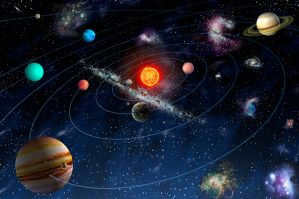
Understanding the Solar System: A Guide for Young Students
The Solar System and Its Wonders
Our beautiful planet travels around the Sun at an astonishing speed. Similarly, other magnificent objects also orbit the Sun: planets, moons, comets, and asteroids. Collectively, they make up the solar system. At the heart of this system is the Sun, a brilliant star that holds these celestial bodies in their graceful orbits through the power of its gravity.
In our solar system, there are a total of 8 planets. These planets can be divided into two distinct groups based on their size. The first group consists of giant planets like Jupiter, Saturn, Uranus, and Neptune. The second group, known as the terrestrial planets, includes planets that are similar in size to Earth, such as Mercury, Venus, and Mars. Earth itself belongs to this group. All of these planets follow an elliptical orbit around the Sun, much like the track that athletes run in a stadium. Additionally, each planet also rotates around its own axis.
Out of all the planets, Mercury is the fastest. It completes one revolution around the Sun in just 88 Earth days. This comes as no surprise since Mercury is the closest planet to the Sun. On the other hand, Neptune is the planet that is farthest from the Sun. It takes a whopping 165 years for this giant planet to complete one orbit around the Sun.
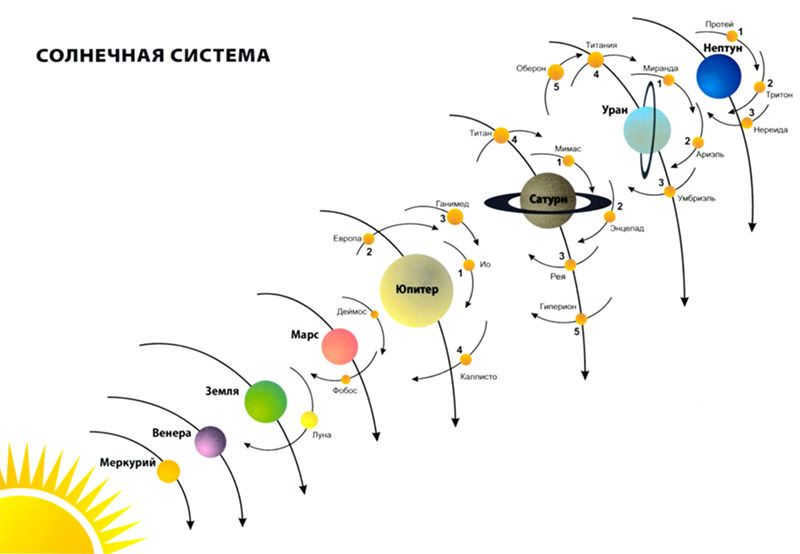
There are satellites orbiting almost every planet in our solar system. However, the planets Venus and Mercury have not yet been found to have any satellites. In the region between Mars and Jupiter, there are numerous asteroids, which are often referred to as small planets. Additionally, comets, which are small celestial bodies surrounded by a cloud of gas and known for their stunning glowing tails, also travel in orbit around the Sun. Furthermore, the Sun is orbited by countless other celestial bodies, ranging in size from minuscule grains of sand to massive chunks of stone. In a larger sense, the Sun, along with all of its planets, satellites, and other celestial bodies, revolves around the center of our Galaxy. It is truly fascinating to think about – the Moon orbits around the Earth, the Earth orbits around the Sun, the Sun orbits around the center of the Galaxy, and the Galaxy itself is constantly in motion.
The Sun
The Sun is a colossal luminous sphere composed of hydrogen and helium gases. It holds the title for being the largest entity within the solar system. In the field of astronomy, it is categorized as an average-sized star known as a yellow dwarf. Our galaxy is home to over 100 million of these stars. However, to us, the Sun serves as a vital source of both light and warmth. It is through solar energy that the Earth’s water cycle operates and winds are generated. Even the energy stored within minerals such as oil, coal, peat, and gas can be traced back to the Sun’s rays.
For a staggering 6 billion years, the Sun has illuminated the sky without depleting even half of its reserves. Its surface is consistently in motion, resembling bubbling rice porridge. Additionally, the Sun pulsates rhythmically, much like a beating heart.
Within the heart of the Sun lies a central core, while encircling it is a luminous corona, a dazzling halo that can only be witnessed during celestial events like solar eclipses.
The Sun is adorned with immense sunspots, some of which surpass the size of the entire globe. These spots exhibit temperatures several hundred degrees cooler than the Sun’s surface. Through meticulous observation, astronomers have discerned that the Sun is not stationary, but rather rotates at a relatively slow pace. Every 10-11 years, the quantity of these spots increases, marking a period of heightened solar activity. During these times, Earth experiences more frequent auroras and ever-changing weather patterns. On occasion, the Sun emits bursts of molten matter into its atmosphere, forming colossal tongues of flame known as prominences.
Scientists use special solar filters on their telescopes to observe numerous fascinating phenomena occurring on the Sun. It is crucial to note that looking at the Sun, even with regular binoculars, is highly unsafe and can result in severe damage to one’s eyesight. It is worth remembering that a simple magnifying glass can start a fire with a concentrated sunbeam, and binocular lenses collect a significantly greater amount of light.
Planets
The term “planet” comes from the Greek word for “wandering star.” In ancient times, astronomers observed that not all celestial objects remained fixed in the sky. Instead, some objects appeared to move across the starry backdrop, wandering amidst the stars. This phenomenon was eventually understood to be due to the planets orbiting around the Sun.
Unlike stars, planets shine uniformly instead of twinkling. Planets do not emit light themselves, but instead they are illuminated by the light of stars. This distinction allows us to easily differentiate between planets and stars in the night sky, a skill that has been developed since ancient times. Mercury, Venus, Mars, Jupiter, and Saturn were all discovered many centuries ago because they are visible to the naked eye from Earth. It took many more centuries and the invention of the telescope before a new planet, Uranus, was discovered in 1781. Following the tradition of ancient astronomers, it was named after the Greek god of the sky.
A hundred years later, another planet, Neptune, was discovered. This marked a significant milestone in the history of astronomy, as scientists were able to deduce the existence of a new celestial body through mathematical calculations, rather than relying solely on observations of the night sky.
Pluto used to be included among the planets of our solar system for a period of time. Its discovery occurred in 1930. However, Pluto’s status as a planet did not last long. Recently, scientists have reclassified it as an asteroid due to its small size, distinguishing it from the other planets.
Mercury
Mercury holds the title of being the planet closest to the Sun and also the smallest in size. Its close proximity to the Sun has made it difficult for scientists to conduct thorough studies. Mercury can only be observed with the naked eye during the early morning or evening. However, this can be quite a challenge as Mercury appears as a tiny star amidst a bright sky. When viewed through a telescope, only a crescent shape, similar to that of a young moon, can be seen. There is a popular legend that the renowned astronomer Nicolaus Copernicus never had the opportunity to see Mercury in his lifetime.
Nowadays, modern technology such as radio telescopes and spacecrafts have made it possible to capture images of distant celestial bodies. However, out of all the planets in the Earth’s group, Mercury remains the least explored.
Interestingly, humans have been aware of the existence of the planet Mercury for a very long time. Its presence was known as early as the third millennium BC. Mercury has a fast orbit around the Sun, completing a full rotation in just 88 days. It is believed that the planet earned its name from the ancient Greeks due to its swift movement. In Greek mythology, Mercury is the name of the ancient Roman god associated with trade, travel, as well as cunning and deception. This deity was often depicted as a young man running in winged sandals.
However, the rotation of Mercury around its axis is incredibly slow. As it completes a full rotation, it manages to orbit the Sun twice. When one side of the planet faces the Sun, it experiences scorching temperatures exceeding 400 °C. Meanwhile, on the opposite side of Mercury, the temperature plummets to a bone-chilling -170 °C. These extreme temperature variations make Mercury the most contrasting planet in the entire solar system. Additionally, there are regions on Mercury’s surface that never receive sunlight, resulting in perpetual darkness and cold.
In 1975, scientists had the opportunity to capture images of Mercury’s surface. To their surprise, they discovered that the planet, much like the Moon, is covered in craters – rounded indentations on its surface.
Mercury orbits the Sun in its elongated path, without any satellites accompanying it.
Venus, the second planet from the Sun, is positioned closer to Earth than any other planet. It stands as the most radiant celestial body in our sky, second only to the Sun and the Moon. This heavenly body can be seen during the morning or evening hours. Venus typically appears on the horizon 3 hours prior to sunrise, hence its name derived from the goddess of dawn, Venus, who was also revered as the goddess of love and beauty.
Venus is extremely hot. It holds the title for being the hottest planet in our solar system. Its surface is enveloped by a thick layer of carbon dioxide, which acts as a greenhouse and traps the sun’s heat. As a result, the temperature on Venus skyrockets to over 400°C, resembling a scorching furnace. Due to such extreme conditions, there is no presence of water on Venus, as it would instantly evaporate. Additionally, Venus boasts an impressive number of volcanoes, numbering in the hundreds of thousands. These volcanoes are regularly active, constantly erupting and releasing their fury. As a result, Venus stands as the most active celestial body within our solar system. The frequent volcanic eruptions also generate electrical discharges, leading to thunderstorms and lightning bolts that illuminate the skies of Venus.
There is a thick layer of clouds surrounding the entire Venus, with a height of up to 100 kilometers. These clouds are composed of droplets of sulfuric acid and are considered to be toxic. They always move in an east to west direction, propelled by a continuous strong wind. The presence of this dense cloud layer prevents Venus from ever appearing brighter than a cloudy, rainy day on Earth. Additionally, the sky above Venus is a yellow-green color, in contrast to the blue sky seen on Earth.
Venus is similar in size to Earth, but it differs in shape. While Earth is slightly flattened at the poles, Venus is almost perfectly spherical.
Venus completes one orbit around the Sun in 225 Earth days. While all other planets rotate counterclockwise, Venus stands out by rotating clockwise, accompanied only by Uranus. Interestingly, a single day on Venus is longer than its entire year as it rotates at a slower pace on its axis compared to its revolution around the Sun. Similar to Mercury, Venus does not have any natural satellites.
Earth was initially the sixth planet recognized by humans. Despite previous significant astronomical findings, scientists were unaware that Earth was also a celestial body, similar to Mars or Venus, both of which had been familiar since ancient times. It wasn’t until the 16th century that Nicolaus Copernicus ultimately unveiled Earth as a planet.
Earth, situated as the third planet from the Sun, holds the distinction of being the largest among the terrestrial planets. With an estimated age of approximately 4.5 billion years, it possesses a single natural satellite known as the Moon. In the span of a year, Earth completes one orbit around the Sun, while it rotates on its axis in 24 hours, constituting a day. During this period, Earth traverses more than 2.5 million kilometers throughout space.
Unlike the other celestial bodies in our solar system, Earth boasts a unique feature: an atmosphere rich in oxygen, which is essential for sustaining life as we know it. This protective shield shields us from harmful radiation emanating from outer space. Within the dense layers of our atmosphere, intrusive meteorites meet their fiery demise. The majority of our planet’s surface is blanketed by vast oceans and seas, giving rise to the conditions necessary for the emergence of life.
The Earth’s formation can be traced back to a dense cloud of interstellar dust. Initially, it existed as a frigid and barren celestial entity. However, the influence of sunlight, the gravitational pull of the sun, and collisions with other cosmic bodies caused the Earth to gradually heat up. Eventually, it reached such scorching temperatures that it underwent a melting process. During this transformation, certain elements sank deep into its core, while others remained on the planet’s surface. Afterward, the Earth gradually began to cool once more.
The initial cooling occurred in the outermost layer. This outer layer, known as the crust, is responsible for forming the continents on Earth’s surface, while the depressions are filled with water, creating the seas and oceans. Located at the center of the planet is the extremely hot core. Separating the crust from the core is another layer called the mantle. In essence, the Earth’s structure can be likened to a soft-boiled egg, with the crust acting as the top shell, the mantle resembling the white, and the core representing the hot and dense yolk.
Out of all the planets, Earth has been extensively studied, which is not surprising considering that it is our home planet.
Mars
Mars is the fourth planet in the Solar System. It has a diameter half that of Earth, making it the seventh largest planet. Earth and Mars orbit the Sun, with Earth moving at a faster pace. The Martian year is approximately twice as long as the Earth year. Every two years, Earth catches up to Mars, resulting in the closest distance between the two planets. This proximity allows astronomers to observe Mars more clearly, leading to centuries of research on this distant planet.
Periodically, Mars experiences dust storms that can endure for months. These storms reveal the planet’s vast sandy deserts, which give it its distinctive light orange hue. This unique coloration has earned Mars the nickname “the red planet” since ancient times. Early astronomers associated the planet with their god of war, often depicted wearing red robes, hence the name Mars.
Thanks to spacecraft that have orbited Mars and taken photographs, scientists have acquired a wealth of valuable information about the Red Planet. In fact, some vehicles have even landed on the planet’s surface and collected soil samples, which were then delivered to researchers for analysis. The Mars rovers, in particular, have taken numerous pictures, enabling astronomers to create detailed maps of the Martian terrain.
One striking feature of Mars is its abundance of craters and mountains. In fact, some of these mountains reach heights of over 20 kilometers above the planet’s surface. For instance, Mount Olympus on Mars is considered the largest mountain in the entire solar system, standing at a staggering 27 kilometers in height. In comparison, Earth’s highest mountain, Mount Everest, is less than 9 kilometers tall.
Jupiter
Jupiter, the largest planet in the solar system, is located fifth from the Sun. It is so massive that it could easily contain all the other planets within it. This colossal planet was given its name by ancient astronomers as a tribute to the mighty Roman god of thunder. As one would expect for a deity of such significance, Jupiter is accompanied by a retinue of moons, with a total of 63 satellites having been identified by astronomers. Among these moons, four were first observed by Galileo.
Despite its immense size, Jupiter’s surface remains hidden from view for observers on Earth, even when using the most powerful telescopes. The planet is perpetually enveloped in a thick layer of clouds. As with all giant planets, Jupiter is situated at a great distance from the Sun, resulting in extremely low temperatures. In fact, the temperature on Jupiter is a bone-chilling minus 145°C. However, this frigid temperature pertains only to the upper cloud layer. If one were to descend towards the planet’s surface, they would encounter a surprisingly pleasant room temperature. This is due to the intense heat emanating from the planet’s interior.
The time it takes for Jupiter to complete one orbit around the Sun is approximately 12 years. However, its rotation speed on its axis is incredibly fast. Jupiter spins like a wolf, completing one revolution in just 10 hours in Earth time. This rapid rotation causes Jupiter to be flattened at its poles and also gives rise to powerful hurricane winds on the planet.
Back in 1664, astronomers made the first recorded observation of a peculiar red feature on Jupiter. This is the well-known Great Red Spot, which can be likened to a colossal hurricane vortex found on Earth, but with extraordinary strength and size. In fact, it is the largest atmospheric vortex in the entire solar system. The Great Red Spot is so massive that it could accommodate three Earths within its boundaries. Due to its immense size, this vortex can persist on Jupiter for centuries. Scientists have been monitoring and studying this phenomenon through telescopes for over 300 years.
Jupiter, the fifth planet from the Sun, is enveloped in a vast expanse of liquid matter that resembles the appearance of sour milk, rather than having a solid surface. The composition of Jupiter primarily consists of hydrogen and helium, similar to our Sun. Interestingly, Jupiter was only slightly lacking in mass to achieve the status of a star, akin to our radiant luminary.
Saturn
Occupying the sixth position in proximity to the Sun, Saturn is the second largest celestial body in our Solar System, surpassed only by Jupiter. Saturn is classified as one of the colossal planets and derives its name from the ancient deity Saturn, who was a formidable figure and the father of Jupiter.
In terms of size, Saturn is slightly smaller than Jupiter, yet it is three times less dense in comparison. This gargantuan planet consists primarily of hydrogen and helium gases, similar to its neighboring celestial body. Consequently, Saturn does not possess a solid surface, and if hypothetically placed in water, it would effortlessly float atop the liquid’s surface.
Saturn swiftly spins on its axis, completing a full revolution in a mere 10 hours – a remarkable speed. This rapid rotation has resulted in Saturn having a distinct flattened shape at its poles, resembling the appearance of a pumpkin. As it orbits the Sun, Saturn completes its journey in approximately 30 Earth years.
On Saturn, the temperatures are frigid, reaching as low as minus 180 °C, as the planet resides at a significant distance from the Sun. This distant location is also home to frequent lightning storms and powerful tempests, which can be observed even from our planet.
Saturn is likely the most remarkable celestial object in the solar system. It is encircled by a set of rings. Galileo Galilei was the initial person to observe these rings using his telescope. However, his telescope’s lenses were not strong enough, thus the renowned scientist believed that he was seeing satellites orbiting the planet. Nevertheless, it is not always possible to observe Saturn’s rings, even with the most advanced radio telescopes. Every 15 years, the rings of Saturn become visible from Earth. Yet, only a faint shadow on the surface of the planet serves as a reminder of their existence.
Saturn has an abundance of satellites, with more than 60 in total. The majority of these satellites are relatively small in size. However, Saturn’s largest satellite, known as Titan, was first discovered back in 1655. Titan is unique in that it weighs a remarkable 20 times more than all of Saturn’s other satellites combined.
Scientists have conducted extensive research and have determined that Titan has water present on its surface. The atmospheric conditions found on this particular satellite of Saturn closely resemble those that existed on Earth approximately 4 billion years ago, during the emergence of life on our planet. Despite these similarities, Titan is enveloped in perpetual darkness. Its surface is constantly shrouded by a dense layer of clouds and a thick haze, obscuring any view of the sun or the stars. Even at midday, the brightness on Titan is akin to that of a moonlit night on Earth.
Rhea, Saturn’s second largest satellite, is primarily composed of ice. Similar to other icy celestial bodies, Rhea exhibits a distinctive pattern of bright stripes and dark spots across its surface.
Among Saturn’s many moons, there are several unique objects. Take Japetus for example. It is encircled by an unusual ridge that gives it the appearance of a peach pit. One half of Japetus is incredibly dark and smooth, almost as if a black cloth has been draped over it. Another moon, Mimas, boasts a large crater that makes it look like a partially eaten apple. And then there’s Hyperion, which has the shape of a strawberry.
The most enchanting and enigmatic moon of Saturn is the snow-white Enceladus. Its surface is composed entirely of pristine ice, reflecting sunlight like a mirror and standing out brightly amidst its darker companions.
Although they may be small in size, certain satellites have a crucial role to play. Take the case of the diminutive Atlas satellite, which prevents particles from escaping one of Saturn’s rings. Meanwhile, Prometheus and Pandora act as shepherds, accompanying two other rings. These satellites were only identified as recently as 1980, making them a relatively recent discovery in the field of astronomy.
The vast majority of Saturn’s known satellites have been found in recent years.
Uranus
Uranus, the seventh planet from the Sun, was initially discovered through the use of a telescope. Despite previous observations, Uranus had been mistakenly identified as a star. The credit for the discovery of Uranus as a planet goes to the English astronomer William Herschel. In 1781, while conducting his regular observations of the stars, Herschel stumbled upon Uranus. At first, he believed it to be a comet, which he reported during a meeting of the Royal Society. However, it was later confirmed that the newly found celestial body was indeed a planet.
As the third largest planet in the solar system, Uranus is quite challenging to observe due to its significant distance from Earth. To catch a glimpse of Uranus even through a telescope, one must have precise knowledge of its current location. Uranus embarks on its celestial journey at the outermost boundary of the solar system.
Unlike the other planets that rotate counterclockwise, Uranus and Venus have a unique rotation pattern as they both rotate clockwise on their axes. However, Uranus has a tilted axis, causing it to roll around the Sun like a lump. It completes one rotation in just 17.5 Earth hours, while it takes 84 Earth years to complete one revolution around the Sun.
On Uranus, the Sun rises in the west and sets in the east due to its unusual rotation. Its distance from the Sun results in significantly less sunlight, about 400 times less than what Earth receives. As a result, the planet is always in a state of twilight and experiences extremely cold temperatures. Uranus is covered by a thick gas haze, making it impossible to observe its surface with the naked eye. Only through the use of spacecraft have scientists been able to determine that the planet is composed of ice and rocks.
Neptune
Neptune is the eighth planet from the Sun and the most distant. It was first observed in 1845, an interesting fact is that it was actually discovered while someone was sitting at a desk. Astronomers were able to calculate its approximate orbit using mathematical calculations. At that time, scientists already had knowledge of Kepler’s and Newton’s laws, which helped in the calculations. Subsequent observations confirmed the accuracy of the calculations. The newly discovered planet was named after the Roman god of the seas and oceans. Shortly after, a satellite of Neptune was also discovered and named Triton, who is also a sea deity and the son of Neptune. Another satellite, Nereid, was discovered 100 years later, also named after a sea deity. The remaining satellites were only discovered in the 20th century with the help of spacecraft.
Neptune, a colossal planet, completes a single orbit around the Sun in roughly 165 Earth years, boasting the lengthiest celestial path among all known planets. Since its initial discovery, Neptune has now triumphantly concluded its full revolution around the Sun.
Neptune, with an axis revolution rate of 16 Earth hours, impressively completes a full rotation in such a short span. This rapid rotation results in the most formidable winds ever witnessed, with estimations suggesting speeds of up to 650 meters per second. To put this in perspective, hurricanes on Earth are defined by winds blowing at 180 meters per second. Hence, Neptune stands as the planet with both the swiftest and most potent winds in the entire solar system. Unfailingly, these winds persist in a consistent westerly direction.
Neptune is situated at such a vast distance from the Sun that to it, the Sun appears merely as a brilliant star rather than the familiar yellow disk we observe. Moreover, Neptune is bathed in sunlight that is almost 1,000 times dimmer than what our planet receives, resulting in a perpetual twilight. Surprisingly, despite its distance from the Sun, the average temperature on Neptune is minus 220 °C, which, although chilly, is not as frigid as one might expect. Scientists hypothesize that Neptune emits heat from its interior, yet they are still unable to explain why it radiates more heat than it receives. Additionally, rings have been detected encircling Neptune, although their specifics remain largely mysterious. Neptune remains shrouded in its distant orbit, unwilling to divulge its enigmas.
Pluto
Scientists have been proposing the existence of an unidentified planet in our solar system since the 1800s. They carefully observed the movement of Uranus and, applying Newton’s laws, determined the approximate location of this mysterious celestial body. Finally, in 1930, astronomers were able to spot the new object through a powerful telescope. Surprisingly, it turned out to be smaller in size compared to the Moon.
Interestingly, the name “Pluto” was coined by an 11-year-old English schoolgirl named Venetia Burney. After the discovery of the new planet, Venetia shared her idea with her grandfather, who happened to work at the library of the University of Oxford. He was captivated by his granddaughter’s suggestion and relayed it to the astronomers. Ultimately, the name “Pluto” was officially adopted.
Studying Pluto is challenging due to its distance from Earth. It is positioned 40 times farther away from us than the Sun. Until now, no space station has been able to approach Pluto.
Consequently, our knowledge about Pluto is limited. It endures some of the most extreme cold temperatures in the entire solar system, dropping below minus 200 °C. The surface is entirely covered in ice, although this ice is not composed of water. Instead, it consists of frozen nitrogen gas that solidifies and forms large transparent crystals resembling enormous snowflakes. These crystals take on a yellowish-pink hue as a result of chemical processes. This frozen and dark realm moves at a slow pace: it takes Pluto 245 years to complete one orbit around the Sun, and it rotates on its axis once every 6.5 Earth days.

